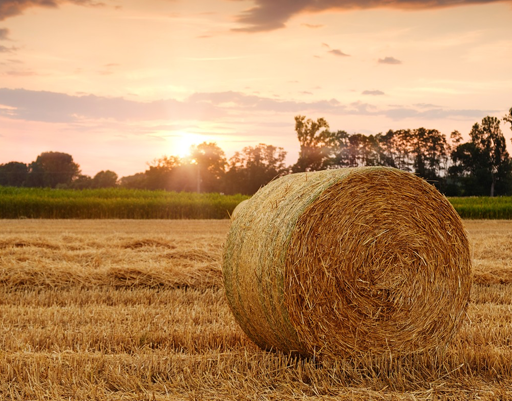Feeding in Short Grass
Mon April 4, 2022
As usual, the weatherman has been off the mark with his forecast of rain. My weather rock has a pile of dust around it, like a snow drift from all of the brutal wind we have been getting lately. With grass in such short supply, it is important to keep in mind how the ruminant digestive system functions so that we can best feed our livestock.
Ruminants, like cattle, sheep, goats, and deer, have similar type of fermentative digestive systems. The digestive systems are slightly specialized for each species, but they all have the ability to take relatively low quality, indigestible forages and turn them into usable products. The bacterial population in the rumen breaks down the forage by fermenting it, creating volatile fatty acids that the animal absorbs and turns into energy. The nitrogen that makes up the protein in what we feed is what the bacteria need to survive. I know we got really deep there, but it is important to understand how it works so that we understand how to feed it. The thing to remember is we are feeding the bugs in the rumen, not the animal.
When we supplement protein, the bacterial population grows, consuming more of the forage in the rumen. This makes the animal “hungry”, causing it to want to eat more forage. This is when we run into problems during conditions like we have right now. If there is not enough forage in the pasture, it has to come from somewhere. If there is not enough forage available to the bacteria, they die. If there are not enough bacteria to consume the nitrogen that we feed in the way of protein, the animal has to get rid of it. When the animal has to remove excess nitrogen, it costs both you and that animal you are feeding. Not only are we losing money when it is the feed and its byproducts are passed in urine and feces, but it also requires a lot of energy for the animal to process it. This generally puts us into a negative energy situation, requiring the body to use any remaining fat stores to produce the energy to excrete the excess waste. This is where our supplementation choices are critical.
Supplementing forage in the way of hay is an easy way to resolve the forage shortage issue. Animals generally consume 2.5% to 3% of their body weight daily. This will help you gauge how much forage you need to supplement to fill the gap of what your pasture is not providing. Don’t over supplement protein. Without proper forage, you can create real issues for your animals as well as your bank account. When choosing a supplement, pick one that is lower in protein and higher in fiber. This allows you to maintain bacteria population and provide extra fiber in the diet for those bacteria to feed on. Interestingly enough, higher fiber feeds are generally cheaper because the fiber acts like “filler” and are lower priced byproduct commodities. These are your all-stock type feeds, and are safe for all types of livestock. Supplementing fiber is something that needs to take place daily, or adequate stockpiles need to be available to meet your livestock’s needs.
I am sure it will rain again one day, and we will be talking about how to add protein into the diet to better utilize all the excess forage we have. For now though, we need to make sure we are providing enough forage and not over supplementing protein. With the right balance, your ruminant will come out of the drought that we are experiencing in much better shape, and be more productive over all.

Recent Posts
Dec 2023
Oct 2023
Mar 2023
Feb 2023
Jan 2023
Dec 2022
Nov 2022
Oct 2022
Sep 2022
Aug 2022
- 2022 Drought Preparedness
- Drought Supplementation
- New Show Pig?
- PROTECTING YOUR FAMILY AND VEHICLES…
Jul 2022
Jun 2022
Apr 2022
Mar 2022
Feb 2022
Jan 2022
Nov 2021
- From Essential Feeds: Processed Grains
- Holiday Shopping at Back 40
- Choice of Champions Livestock Products
- Trailer Lights and Safety in the Dark
- Winter Supplements
Oct 2021
Sep 2021
Aug 2021
Jul 2021
Jun 2021
- Kicking Off Summer with Some Maintenance
- Safe-Guard De-worming Block For Cattle
- Ultramatic Feeder Parts
May 2021
Apr 2021
- DEMON WP - An Early Spring 'Adios' for Bugs
- Finding the Right Trailer for You
- The Ants Come Marching One by One..
Mar 2021
Feb 2021
- Fire Ants Mounding Up In Your Yard?
- Special Order Truck Accessories!!
- Stop the Weed Seed Sprouts
- Texas Elite Gilt Show